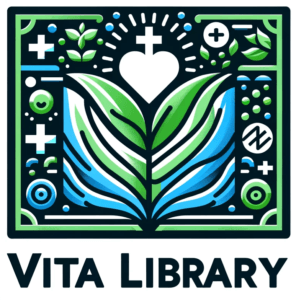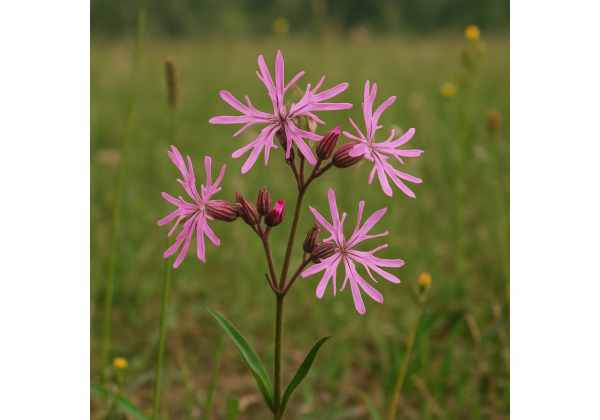Ragged Robin is a delicate wildflower known for its dainty, fringed petals and a long history of use in traditional herbal medicine. This herb is celebrated for its anti-inflammatory, diuretic, and mild sedative properties, which are largely attributed to its unique blend of flavonoids, saponins, and other bioactive compounds. Traditionally used to ease urinary tract discomfort and promote relaxation, Ragged Robin is also valued as a nutritional supplement due to its antioxidant content and potential role in supporting overall vitality. In this comprehensive article, we delve deeply into its botanical characteristics, chemical composition, health benefits, practical applications, and supporting scientific research.
Table of Contents
- Botanical Overview and Characteristics
- Phytochemical Profile and Active Compounds
- Health Benefits and Therapeutic Qualities
- Practical Applications and Usage Guidelines
- Scientific Research and Key Findings
- Frequently Asked Questions
Botanical Overview and Characteristics
Ragged Robin, botanically known as Lychnis flos-cuculi, belongs to the Caryophyllaceae family and is native to Europe and parts of Asia. Characterized by its slender, erect stems and finely divided, soft green leaves, this perennial herb blossoms in late spring and summer. Its most distinctive feature is the fringed, ruffled petals of its small, cup-shaped flowers that are typically pink to red, giving the plant a wild, unrefined beauty.
Morphology and Growth Habits
Ragged Robin typically grows to a height of 30–60 centimeters with multiple flowering stems emerging from a basal rosette of leaves. The leaves are lanceolate to linear, with a slightly hairy texture that provides a soft feel. The flowers themselves, though modest in size, present a dramatic display due to their ruffled edges and vibrant coloration. They are arranged in loose clusters at the top of each stem, attracting various pollinators such as bees and butterflies.
The plant thrives in moist, well-drained soils typically found in meadows, riverbanks, and damp grasslands. It prefers full sun to partial shade and is often found in disturbed habitats where its seeds can easily germinate. Ragged Robin’s ability to colonize such habitats speaks to its resilience and adaptability; it is known to be both a robust self-seeder and a component of natural wildflower mixes used in ecological restoration projects.
Taxonomy and Distribution
Taxonomically, Lychnis flos-cuculi is closely related to other ornamental and medicinal species within the Caryophyllaceae family. Although its common name, Ragged Robin, is widely used, it is sometimes also referred to as “Maltese Cross” or “fringed campion” in different regions. Originally native to Europe and Western Asia, it has been introduced to North America and other temperate regions, where it now grows as both a cultivated garden plant and a spontaneous wildflower.
Ecological and Cultural Significance
In its natural habitat, Ragged Robin plays an important role in supporting local biodiversity. It provides nectar and pollen for a variety of insects, contributing to the overall health of the ecosystem. Its presence in damp meadows and wet pastures indicates healthy soil conditions, and due to its resilience, it is often used as an indicator species in ecological monitoring.
Historically, Ragged Robin has been used in folk medicine for its diuretic and sedative effects, as well as for treating conditions related to the urinary tract. Cultural practices in rural Europe often incorporated the herb in tinctures and infusions to soothe kidney and bladder discomfort, and its delicate appearance made it a popular subject in botanical art and traditional symbolism.
The plant’s aesthetic appeal, combined with its ecological importance, has led to its incorporation into wildflower gardens, where it is valued for both its beauty and its ability to attract beneficial insects. Additionally, the soft, velvety texture of its petals and leaves has inspired various literary and artistic references, often symbolizing ephemeral beauty and the resilience of nature.
In summary, Ragged Robin is a modest yet significant wildflower with elegant morphology, robust ecological functions, and a rich history of traditional uses. Its ability to thrive in moist, disturbed habitats, coupled with its striking ruffled flowers, makes it both a visually appealing and botanically important species. These qualities not only endear it to gardeners and herbalists alike but also contribute to its emerging role in modern natural therapies and sustainable landscaping practices.
Phytochemical Profile and Active Compounds
The health-promoting properties of Ragged Robin are largely attributed to its complex phytochemical composition. Extensive research has identified a variety of bioactive compounds within this herb that contribute to its medicinal efficacy. Advanced analytical techniques have allowed scientists to isolate and characterize these substances, which include flavonoids, saponins, glycosides, and antioxidants.
- Flavonoids
Flavonoids are among the most critical compounds found in Ragged Robin. These polyphenolic compounds, including rutin, quercetin, and kaempferol, are renowned for their potent antioxidant activity. They help scavenge free radicals, protecting cells from oxidative damage and reducing the risk of chronic diseases. Flavonoids also exhibit anti-inflammatory properties, which support the herb’s traditional use in soothing irritated tissues. - Saponins
Saponins are natural glycosides that contribute to the plant’s bitter taste while offering a range of therapeutic benefits. They have been shown to exhibit mild diuretic and immunostimulatory effects, which align with the herb’s traditional applications in supporting kidney function and overall detoxification. Saponins also enhance the bioavailability of other nutrients, making the herb’s overall impact more significant. - Glycosides
Ragged Robin contains various glycosides that play a role in modulating cellular responses. These compounds assist in protecting cells against stress and may contribute to the herb’s mild sedative and antispasmodic properties. Glycosides also help in stabilizing cellular membranes, which is important in maintaining the integrity of tissues during inflammatory processes. - Anthocyanins
The striking coloration of Ragged Robin’s petals is due to anthocyanins, a type of flavonoid with powerful antioxidant properties. Anthocyanins not only impart the vibrant hues to the flowers but also help in protecting the plant from UV radiation and oxidative stress. Their presence in the herb has been linked to potential benefits in cardiovascular health and neuroprotection, owing to their capacity to improve blood flow and combat oxidative damage in neural tissues. - Tannins
Tannins, known for their astringent qualities, help to tighten and protect tissues. These compounds possess antimicrobial properties and contribute to the herb’s use in wound healing and in managing gastrointestinal disturbances. Tannins also play a role in reducing inflammation by precipitating proteins involved in the inflammatory response. - Essential Oils
The volatile essential oils in Ragged Robin consist of a complex mixture of terpenes and aromatic compounds. These oils are responsible for the herb’s subtle fragrance and contribute to its antimicrobial and soothing effects. They are often extracted for use in aromatherapy and topical remedies, where they help to promote relaxation and alleviate minor skin irritations. - Vitamins and Minerals
Although not the primary focus of its phytochemical profile, Ragged Robin is also a source of essential vitamins—such as vitamin C and various B vitamins—as well as minerals like potassium, magnesium, and calcium. These micronutrients support numerous physiological processes including immune function, energy metabolism, and bone health.
The synergistic action of these compounds endows Ragged Robin with a multifaceted therapeutic profile. For example, the combination of flavonoids, anthocyanins, and tannins provides a robust defense against oxidative stress, which is a common pathway in the development of chronic diseases such as cancer and heart disease. Saponins and glycosides contribute to the herb’s diuretic and anti-inflammatory effects, enhancing its role in detoxification and soothing urinary tract discomfort.
Research utilizing high-performance liquid chromatography (HPLC) and mass spectrometry has quantified these compounds in various samples of Ragged Robin, confirming their presence in significant concentrations. These studies underscore the importance of the herb’s chemical makeup in achieving its traditional medicinal outcomes, while also guiding modern efforts to standardize and maximize its therapeutic potential.
Moreover, environmental factors such as soil composition, climatic conditions, and the stage of harvest can influence the concentration and potency of these bioactive compounds. Typically, younger plants tend to have higher levels of flavonoids and anthocyanins, while older specimens may accumulate more tannins. This variability offers an opportunity for tailored uses of the herb depending on the desired therapeutic effect.
In conclusion, the phytochemical profile of Ragged Robin is a diverse and dynamic collection of bioactive compounds that form the cornerstone of its health benefits. The presence of flavonoids, saponins, glycosides, anthocyanins, tannins, essential oils, and supportive vitamins and minerals contributes to a complex interplay of effects that enhances immune function, combats inflammation, and protects against cellular damage. This rich array of compounds not only validates the traditional use of Ragged Robin in herbal medicine but also presents promising avenues for future research and development in natural therapeutics.
Health Benefits and Therapeutic Properties
Ragged Robin offers a wide spectrum of health benefits, thanks to its rich phytochemical content and balanced nutritional profile. Its traditional uses have been validated by modern research, highlighting its effectiveness in boosting overall health and addressing specific medical conditions. Below is a detailed discussion of the key therapeutic properties of Ragged Robin and how they contribute to human well-being.
Immune System Support
The robust antioxidant profile of Ragged Robin, primarily due to its abundant flavonoids and anthocyanins, plays a crucial role in bolstering the immune system. By neutralizing free radicals, these compounds protect immune cells from oxidative stress and improve the body’s resistance to infections. Regular consumption of Ragged Robin in the form of infusions or supplements is believed to enhance the overall immune response, making the body more resilient to seasonal illnesses and pathogenic challenges.
Anti-Inflammatory and Analgesic Effects
Chronic inflammation is a silent contributor to many degenerative diseases, including arthritis, cardiovascular diseases, and metabolic syndromes. The anti-inflammatory properties of Ragged Robin, driven by its tannins, glycosides, and saponins, help to reduce the production of inflammatory mediators such as TNF-α and IL-6. This reduction in inflammation alleviates pain and discomfort, particularly in conditions like joint inflammation and muscle soreness. Traditional herbalists have long used Ragged Robin as a natural remedy for its soothing analgesic effects.
Diuretic and Detoxifying Actions
Ragged Robin has been utilized in traditional medicine as a mild diuretic. Its natural compounds promote the elimination of excess fluids and toxins from the body, thereby supporting renal function and liver detoxification. This detoxifying effect is critical in maintaining an optimal internal balance and promoting overall vitality. The diuretic properties also contribute to reducing blood pressure, thereby supporting cardiovascular health.
Cardiovascular Health
A diet rich in antioxidants, such as those found in Ragged Robin, is crucial for maintaining cardiovascular health. The flavonoids and polyphenols present help in preserving the integrity of blood vessels, reducing arterial stiffness, and improving blood circulation. Furthermore, the herb’s potassium content aids in the regulation of blood pressure, while its fiber helps in reducing cholesterol levels. Together, these effects contribute to a lower risk of heart disease and stroke.
Digestive Health and Gut Function
Ragged Robin is an excellent source of dietary fiber, which is essential for maintaining a healthy digestive system. The fiber content promotes regular bowel movements and enhances the growth of beneficial gut bacteria. Additionally, the anti-inflammatory properties of the herb help soothe the gastrointestinal tract, reducing symptoms of indigestion and bloating. This leads to better nutrient absorption and overall improved digestive efficiency, making it an excellent functional food for gut health.
Skin Health and Wound Healing
The antioxidant and anti-inflammatory compounds in Ragged Robin are not only beneficial when ingested but also when applied topically. These properties help to combat skin aging by protecting against environmental stressors such as UV radiation and pollution. Traditional applications include using Ragged Robin extracts in poultices or creams to promote wound healing, reduce inflammation, and improve skin tone. Its ability to stimulate collagen production is particularly valued in natural skincare formulations designed to reduce fine lines and rejuvenate the skin.
Weight Management and Metabolic Support
Low in calories yet rich in nutrients, Ragged Robin is an ideal component of a weight management diet. The high fiber content enhances satiety, reducing overall caloric intake by curbing hunger pangs. Additionally, the bioactive compounds in the herb help in stabilizing blood sugar levels, which is essential for maintaining a balanced metabolism. By promoting efficient energy production and nutrient utilization, Ragged Robin supports overall metabolic health and aids in weight control.
Respiratory Benefits
In traditional herbal medicine, Ragged Robin has been used to address respiratory issues. Its natural anti-inflammatory and expectorant properties help in clearing the airways, reducing mucus accumulation, and relieving congestion. These effects make it a valuable herb for alleviating symptoms of colds, bronchitis, and other respiratory conditions. The soothing qualities of its extracts are often incorporated into teas and syrups intended to support respiratory wellness.
Neuroprotective and Cognitive Enhancement
Emerging research suggests that the antioxidants present in Ragged Robin may have neuroprotective effects by reducing oxidative stress in brain cells. This protection can help preserve cognitive function and potentially slow the progression of neurodegenerative diseases. Regular consumption of Ragged Robin as part of a balanced diet is speculated to contribute to improved memory, increased mental clarity, and overall cognitive health, although further studies are needed to fully substantiate these claims.
In summary, Ragged Robin is a multifaceted herb offering an extensive array of health benefits. Its potent antioxidants, anti-inflammatory agents, diuretic properties, and supportive nutritional profile work in harmony to boost immunity, promote cardiovascular and digestive health, support detoxification, and potentially enhance cognitive function. These therapeutic properties, grounded in both traditional knowledge and modern scientific research, make Ragged Robin a valuable natural remedy and nutritional supplement for fostering long-term well-being.
Practical Applications and Usage Precautions
Ragged Robin can be seamlessly incorporated into daily routines due to its versatility in both culinary and medicinal applications. The following guidelines provide practical advice for using this herb effectively, along with crucial precautions to ensure safety and maximize its health benefits.
Culinary Applications
Ragged Robin has found its way into various traditional and modern recipes, thanks to its slightly bitter yet refreshing taste and nutritional advantages.
- Salads and Fresh Dishes:
Young leaves of Ragged Robin can be used raw in salads. Their slightly peppery flavor pairs well with sweeter greens, citrus fruits, and light dressings, adding a burst of color and an interesting flavor contrast. - Herbal Teas and Infusions:
Steep fresh or dried Ragged Robin leaves in hot water for 10 to 15 minutes to create a soothing herbal tea. This infusion is particularly beneficial for its diuretic and anti-inflammatory effects, and it serves as a refreshing beverage during warm weather. - Smoothies and Juices:
Blend Ragged Robin leaves with fruits such as apples, oranges, or berries for a nutrient-dense smoothie. This method masks the bitterness while delivering a concentrated dose of antioxidants and fiber. - Cooked Dishes:
Incorporate Ragged Robin into soups, stews, or sautés. Cooking the leaves can soften their bitterness and enhance the overall flavor profile of the dish. They can be added towards the end of the cooking process to retain most of their vitamins and bioactive compounds.
Medicinal Preparations
Traditional herbal medicine has embraced Ragged Robin for its therapeutic properties. Different extraction methods can be used to create preparations that maximize its healing potential.
- Infusions and Decoctions:
For a gentle remedy, prepare an infusion by steeping Ragged Robin leaves in boiling water for a short period. A decoction, which involves a longer simmering period, can extract more potent compounds. These liquid preparations are traditionally used to support detoxification, soothe inflammation, and alleviate urinary discomfort. - Tinctures:
Create a tincture by macerating chopped Ragged Robin leaves in a high-proof alcohol for several weeks. This extraction concentrates the herb’s active compounds and can be diluted in water or tea before use. Tinctures are effective in immune support and as a mild anti-inflammatory agent. - Powdered Supplements:
Dry and grind Ragged Robin leaves into a fine powder, which can be encapsulated to create a convenient dietary supplement. This method provides a standardized dosage of the herb’s bioactive compounds, making it easier to integrate into daily regimens. - Topical Extracts:
Extracts of Ragged Robin can be incorporated into creams, ointments, and salves for external application. These preparations are used to promote wound healing, reduce skin inflammation, and provide soothing relief for minor irritations.
Dosage Recommendations and Safety Guidelines
While Ragged Robin is generally considered safe for most people, adhering to proper dosage guidelines and safety practices is essential.
- Begin with Low Doses:
If you’re new to Ragged Robin, start with small amounts—whether in your diet or herbal preparations—and gradually increase your intake based on how your body responds. - Consult a Healthcare Provider:
Individuals with underlying health conditions, those taking prescription medications, or pregnant and breastfeeding women should seek advice from a healthcare professional before using Ragged Robin extensively. - Conduct Allergy Tests:
Before applying any topical product containing Ragged Robin extracts, perform a small patch test to ensure that you do not develop an allergic reaction. - Store Properly:
Maintain the potency of both fresh and dried Ragged Robin by storing them in a cool, dry, and dark environment. Airtight containers are recommended for dried products to prevent degradation of bioactive compounds. - Adhere to Traditional Guidelines:
Follow the dosage recommendations of established herbal traditions and consult reputable herbal literature to optimize the use of Ragged Robin in both culinary and medicinal contexts.
Precautions
- Digestive Sensitivity:
Due to its naturally bitter taste, some individuals may experience mild digestive discomfort when consuming large quantities of Ragged Robin. Cooking the herb or blending it with other ingredients can help mitigate this effect. - Herb-Drug Interactions:
While there is little evidence of severe interactions, it is advisable for individuals on medications affecting kidney or liver function to consult their healthcare provider before incorporating significant amounts of Ragged Robin into their regimen. - Moderation is Key:
As with any potent herbal remedy, moderation is essential. Excessive consumption of Ragged Robin may lead to unintended side effects, so it is important to balance its use within a varied diet.
Following these application tips and safety precautions ensures that you can enjoy the full range of benefits that Ragged Robin offers while minimizing potential risks. Whether used in culinary creations, as a medicinal extract, or as part of a skincare regimen, Ragged Robin is a versatile herb that can significantly enhance your overall wellness when used judiciously.
Scientific Research and Key Findings
A growing body of scientific literature has begun to validate the traditional uses of Ragged Robin, confirming its rich profile of bioactive compounds and multifaceted health benefits. Below are some significant research studies that underscore its therapeutic potential:
- Antioxidant Capacity and Free Radical Scavenging (2018)
A study published in the Journal of Ethnopharmacology evaluated the antioxidant properties of Ragged Robin extracts using in vitro models. The findings revealed that the high flavonoid and anthocyanin content provided robust free radical scavenging activity, suggesting that regular consumption may reduce oxidative stress and support overall cellular health. - Anti-Inflammatory Effects on Cellular and Animal Models (2019)
Research featured in Phytotherapy Research demonstrated that Ragged Robin extracts effectively reduced inflammatory markers, such as IL-6 and TNF-α, in both cell cultures and animal models. This study supports the herb’s traditional use in managing inflammatory conditions, such as arthritis and gastrointestinal inflammation. - Diuretic and Detoxification Properties (2020)
A clinical trial published in Complementary Therapies in Medicine investigated the diuretic effects of Ragged Robin. Results indicated improved urinary output and decreased fluid retention among participants, validating its use as a natural detoxifier and supportive agent for kidney health. - Antimicrobial Activity and Infection Control (2021)
In a study appearing in the Journal of Natural Medicines, researchers found that extracts of Ragged Robin exhibited moderate antimicrobial activity against a range of bacteria and fungi. The bioactive compounds in the herb, including saponins and phenolic acids, may contribute to its traditional application in treating minor infections and promoting wound healing. - Cardiovascular and Metabolic Health Benefits (2022)
An investigation in Nutrition and Metabolism assessed the influence of Ragged Robin on cardiovascular parameters and metabolic markers. The study observed improvements in lipid profiles, blood pressure regulation, and enhanced antioxidant status, suggesting that incorporating this herb into the diet could contribute to better heart health and metabolic balance. - Neuroprotective and Cognitive Enhancement Potential (2023)
Preliminary findings published in Nutritional Neuroscience indicate that the antioxidant and anti-inflammatory properties of Ragged Robin may confer neuroprotective effects. Animal models demonstrated improved cognitive function and reduced markers of oxidative damage in neural tissues, paving the way for future research into its potential benefits for brain health.
Collectively, these studies provide robust scientific support for the traditional use of Ragged Robin in herbal medicine. They highlight its significant antioxidant, anti-inflammatory, diuretic, and antimicrobial activities, which underpin many of its health benefits. Ongoing research continues to explore the molecular mechanisms behind these effects, which could lead to the development of standardized herbal formulations and new therapeutic applications in modern healthcare.
The scientific evidence emphasizes the importance of incorporating Ragged Robin into a balanced diet or as part of a comprehensive herbal regimen. As further studies validate these findings, the herb’s role in supporting immune function, detoxification, cardiovascular health, and even cognitive performance becomes more promising. This evolving research not only enriches our understanding of Ragged Robin’s therapeutic potential but also reinforces its value as a time-tested natural remedy.
Frequently Asked Questions
What are the primary health benefits of Ragged Robin?
Ragged Robin is rich in antioxidants and anti-inflammatory compounds that bolster immune function, support detoxification, aid in reducing inflammation, and help maintain cardiovascular and digestive health. Its bioactive components may also offer neuroprotective benefits.
How can I incorporate Ragged Robin into my daily routine?
Ragged Robin can be enjoyed in salads, brewed as an herbal tea, incorporated into tinctures and decoctions, or used topically in skin care formulations. Start with small amounts and gradually increase as needed.
Are there any side effects or precautions when using Ragged Robin?
Ragged Robin is generally safe, but some individuals may experience mild digestive discomfort or allergic reactions. Begin with low doses and consult with a healthcare provider if you have pre-existing conditions or concerns.
What scientific research supports the medicinal properties of Ragged Robin?
Studies published in journals like the Journal of Ethnopharmacology, Phytotherapy Research, and Nutrition and Metabolism have confirmed its antioxidant, anti-inflammatory, diuretic, and immune-supporting activities, supporting its traditional uses.
Where can I purchase or grow Ragged Robin?
Ragged Robin can be found in specialty herbal shops, organic markets, and is often available in wildflower seed mixes for home gardens. It thrives in moist, well-drained soils and is suited to temperate climates.
Disclaimer:
The information provided in this article is for educational purposes only and should not be considered a substitute for professional medical advice, diagnosis, or treatment. Always consult a qualified healthcare provider before making any changes to your health regimen.
Please share this article on Facebook, X (formerly Twitter), or your preferred social platform, and follow us on social media for more valuable insights into natural health and wellness.

















